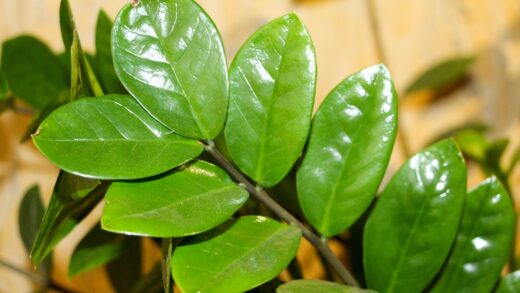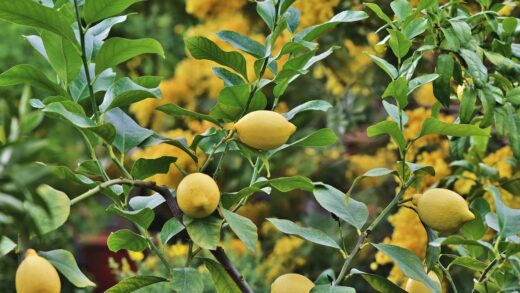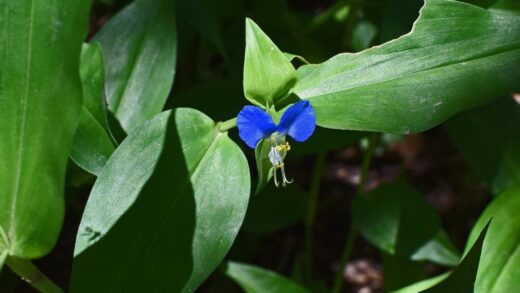Understanding the nuanced water requirements of Hypericum androsaemum is fundamental to cultivating a healthy and visually stunning shrub. This plant, while possessing a notable degree of resilience, demonstrates its full ornamental potential only when its hydration needs are met with consistency and care. Proper irrigation is not simply about providing water, but about providing the right amount at the right time, creating a soil environment that supports a robust root system capable of sustaining the plant through seasonal changes. Mastering the art of watering this particular species involves observing the plant, understanding the soil, and responding to the climate, ensuring a perfect balance that avoids the dual perils of drought stress and waterlogging.
The inherent characteristics of Hypericum androsaemum provide clues to its water needs. Originating from woodland edges and scrubland, it is adapted to conditions where the soil is moisture-retentive but also free-draining. It is not a plant suited for boggy, saturated conditions, nor is it a true xerophyte built for extreme drought. Its ideal state is a consistently moist soil, especially during its active growing period in spring and summer. This consistent moisture fuels the production of its lush foliage, bright yellow flowers, and the subsequent development of its attractive berries.
The age and establishment level of the plant are critical factors in determining its irrigation needs. A newly planted shrub has a limited root system and is far more vulnerable to drying out than a mature, well-established specimen. During its first year in the garden, a young plant requires regular and deep watering to encourage its roots to grow deeply into the soil profile. This foundational care is an investment in the plant’s future resilience, as a deep root system will make it much more capable of finding its own water during drier periods in subsequent years.
The type of soil in which the shrub is planted has a profound impact on how it should be watered. Heavy clay soils have a high water-holding capacity and can become waterlogged if irrigated too frequently, depriving the roots of essential oxygen. In contrast, sandy or gravelly soils drain very quickly and will require more frequent watering to maintain adequate moisture levels for the plant. Amending the soil with organic matter before planting is the best way to create a balanced medium that retains moisture while still allowing excess water to drain away freely.
Establishing an effective irrigation schedule
Creating a rigid, calendar-based watering schedule for Hypericum androsaemum is often counterproductive, as the plant’s actual needs fluctuate significantly with weather, season, and growth stage. A more effective approach is to develop a schedule based on observation and need. The most reliable method is to check the soil moisture directly. This can be done by simply inserting a finger a few inches into the soil near the base of the plant. If the soil feels dry at this depth, it is time to water; if it still feels moist, irrigation can be postponed.
More articles on this topic
For newly planted shrubs, a more structured but still flexible schedule is beneficial. During their first growing season, they should be watered deeply once or twice a week, depending on rainfall and temperature. The goal is to keep the root ball and the surrounding soil consistently moist to encourage rapid root establishment. As the plant matures and its root system becomes more extensive, the frequency of watering can be gradually reduced. A well-established plant may only require supplemental watering during prolonged periods of hot, dry weather.
The time of day when watering is performed can also influence its effectiveness. The best time to water is early in the morning. This allows the water to soak deeply into the soil with minimal loss to evaporation from the sun’s heat. Watering in the morning also ensures that the foliage has ample time to dry before nightfall, which is a crucial factor in preventing the development of common fungal diseases that thrive in damp, cool conditions. Watering in the heat of the day is inefficient, and evening watering can promote disease.
The method of water application is just as important as the schedule. Deep, thorough soaking is always preferable to light, frequent sprinkling. A slow application of water directly to the root zone, using a soaker hose or a gentle setting on a hose-end wand, ensures that the water penetrates deep into the soil profile where it is most needed. This encourages the roots to grow downwards in search of moisture, creating a more drought-resistant plant. Shallow watering only wets the top layer of soil, promoting a shallow root system that is highly vulnerable to drying out.
Signs of overwatering and underwatering
Recognizing the visual cues of water-related stress is a vital skill for any gardener. Underwatering is often the easier of the two problems to identify. The most immediate sign is wilting, where the leaves and soft new stems droop and lose their turgidity. The foliage may also appear dull or lackluster, and in more severe cases, the leaves may start to turn yellow or brown and become crispy at the edges before eventually dropping from the plant. Stunted growth and a sparse display of flowers are also common symptoms of chronic moisture stress.
More articles on this topic
Overwatering, while equally damaging, can present with symptoms that are sometimes confusingly similar to those of underwatering. The key difference is the condition of the soil. In an overwatered plant, the leaves may also turn yellow and droop, but this is due to the roots suffocating and beginning to rot in the saturated, oxygen-deprived soil. The yellowing often starts with the lower, older leaves first. The plant’s growth may be stunted, and the soil around the base may have a sour or swampy smell. Gently examining the roots, if possible, will reveal them to be brown, mushy, and unhealthy rather than firm and white.
It is crucial to differentiate between these two conditions, as the corrective actions are complete opposites. If underwatering is suspected, the immediate remedy is to provide a deep, thorough watering to rehydrate the soil and the plant. For a severely dehydrated plant, it may take several hours for the leaves to regain their turgidity. For overwatering, the solution is to cease all irrigation immediately and allow the soil to dry out. Improving drainage by aerating the soil or, in severe cases, carefully lifting the plant and amending the soil before replanting may be necessary.
Preventative care is always the best strategy. Before planting, ensure the site has excellent drainage, amending heavy soils as needed. For established plants, consistently monitoring the soil moisture before watering is the most effective way to avoid both overwatering and underwatering. Using a layer of organic mulch around the base of the plant can also help to regulate soil moisture, keeping it cooler and reducing evaporation, which creates a more stable and forgiving environment for the plant’s roots.
Adjusting watering for seasons and climate
The water needs of Hypericum androsaemum are intrinsically linked to the changing seasons, requiring the gardener to be adaptable in their irrigation practices throughout the year. In spring, as the plant breaks dormancy and pushes out a flush of new growth, its water requirements increase significantly. The soil should be kept consistently moist to support this period of rapid development. Regular rainfall in spring often assists with this, but supplemental watering may be necessary during dry spells to ensure the plant does not experience stress.
Summer represents the period of peak water demand, coinciding with higher temperatures, longer daylight hours, and the plant’s flowering phase. Evaporation rates are at their highest, and the soil can dry out very quickly. During this time, it is essential to monitor soil moisture closely and provide deep, regular watering, especially for plants in full sun or in containers. An established plant may need a thorough soaking once a week during a hot, dry summer, while younger plants will require more frequent attention to prevent wilting and ensure healthy flower and berry formation.
As autumn arrives, the plant’s growth begins to slow, and its water requirements naturally decrease. Cooler temperatures and often more frequent rainfall mean that supplemental irrigation can be significantly reduced. It is important to allow the plant to begin its transition towards winter dormancy, and excessive watering during this period can be detrimental. The goal is to maintain some moisture in the soil but to avoid keeping it overly wet, which could encourage root rot as the soil temperature drops.
During the winter months, a dormant Hypericum androsaemum has very minimal water needs. In most climates, natural precipitation is more than sufficient to keep the soil adequately hydrated. Supplemental watering is generally not required and should be avoided unless there is an unusually prolonged and dry winter spell. For plants grown in containers, it is important to ensure they do not dry out completely, but the compost should be kept on the drier side of moist to prevent the root ball from freezing solid and damaging the roots.
Watering techniques for container-grown plants
Growing Hypericum androsaemum in containers presents a unique set of watering challenges compared to growing it in the ground. The limited volume of soil in a pot dries out much more quickly than garden soil, especially on warm, windy days. This necessitates a more frequent and vigilant watering routine. During the peak of the growing season, a container-grown plant may need to be watered daily, or even twice a day in very hot and dry conditions. The key is to never allow the potting mix to dry out completely.
The choice of container can influence the watering frequency. Porous pots, such as those made from terracotta, allow moisture to evaporate through their sides and will dry out faster than non-porous containers like plastic or glazed ceramic. It is also essential that any container used has adequate drainage holes at the bottom. Without proper drainage, water will accumulate in the bottom of the pot, leading to saturated conditions that will inevitably cause the roots to rot. Raising the pot on “feet” can also help to ensure that the drainage holes do not become blocked.
When watering a container-grown plant, the goal is to thoroughly saturate the entire root ball. This is best achieved by watering slowly and repeatedly until water begins to run freely from the drainage holes at the bottom of the pot. This ensures that all of the soil has been moistened and also helps to flush out any excess fertilizer salts that may have accumulated. Simply splashing a small amount of water on the surface is ineffective as it will not penetrate deeply enough to reach the majority of the roots.
Monitoring the moisture level in a container is crucial. The finger test is just as effective here as it is in the garden; insert a finger into the potting mix up to the second knuckle to gauge the moisture level. Another useful technique is to gauge the weight of the pot. A well-watered pot will be noticeably heavier than one that is dry. By becoming familiar with the weight of the pot at different moisture levels, a gardener can quickly and accurately determine when it is time to water again.


















